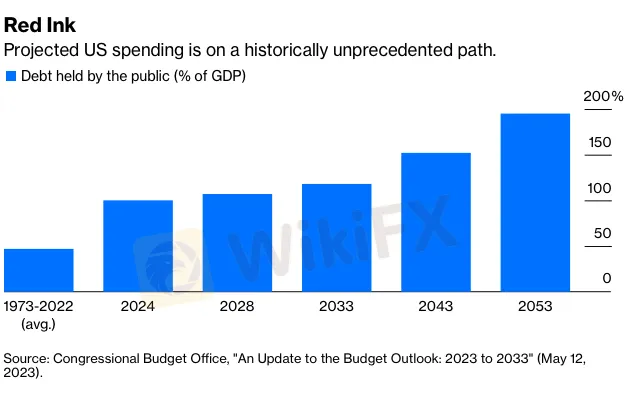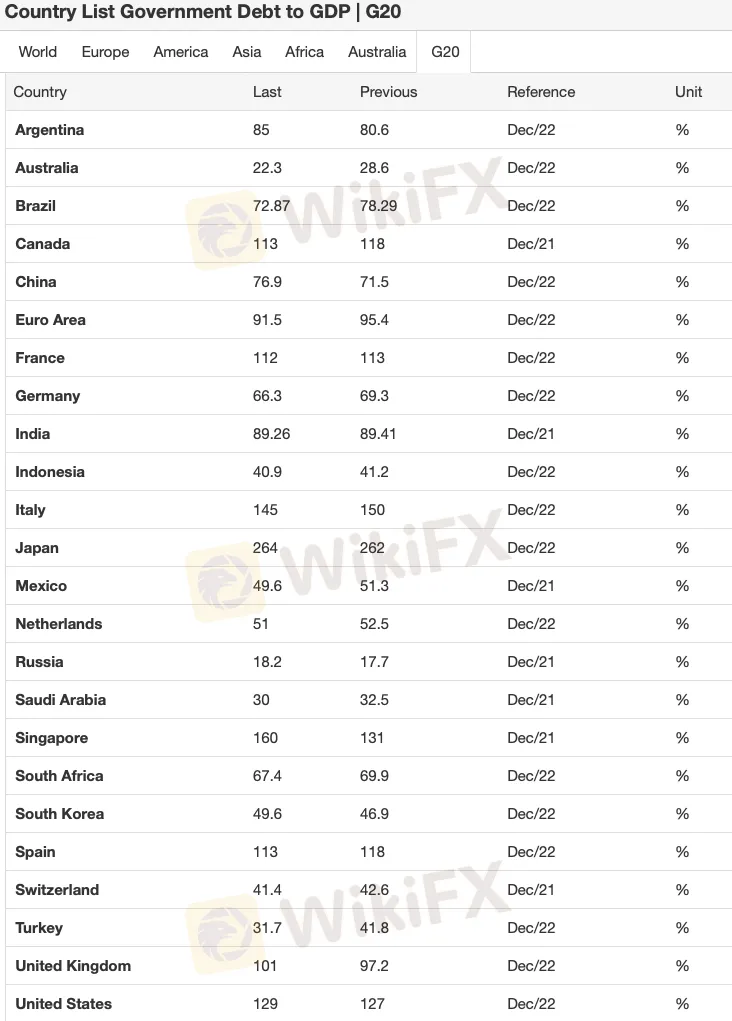Debt ceiling suspended, but challenges persist
Abstract:Based on the recent piece of opinion released by some news agency highlighted that the latest budget deal successfully suspended the debt ceiling, averting a potential debt default. However, it also pointed out that this measure does little to address the United States’ long-term fiscal challenges, as US deficits continue to accelerate.

Based on the recent piece of opinion released by some news agency highlighted that the latest budget deal successfully suspended the debt ceiling, averting a potential debt default. However, it also pointed out that this measure does little to address the United States long-term fiscal challenges, as US deficits continue to accelerate.
Escalating US debts
According to the Congressional Budget Office, the US is projected to have deficits exceeding 5% of its Gross Domestic Product for an extended period. In the next decade alone, the countrys total debt is expected to reach approximately $20 trillion. Despite the recent agreement, this reduction is a mere $1.5 trillion. The debt-to-GDP ratio, which compares the US debt to its income, will continue to rise and is estimated to reach around 115% by 2033, with further increases projected beyond that. By the middle of the century, US debt could potentially approach 200% of the public debt-to-GDP ratio.

Concerns and projections
The article also highlights that these projections are somewhat optimistic, as they do not account for potential events like another global financial crisis or urgent need for investment due to factors such as global warming. These factors could significantly impact the US debt landscape and necessitate additional financial measures.
Where does that put the US in the G20 rankings?
Among G20 nations, the United States currently holds the second-highest debt-to-GDP ratio, second only to Japan. However, it is crucial to note that Japan‘s ratio stands at a significant 264%, making it an outlier in this regard. Japan has managed to finance its debt due to its large domestic investor base, strong savings culture, and intervention by the Bank of Japan in the bond market. Nevertheless, the long-term sustainability of Japan’s debt remains a concern.

The larger the US debt becomes, the more and more concerns there will be surrounding how that debt is managed. Expect this to become more and more of a focus in US politics moving forward, but for now, there is no immediate danger for the US from its high debt-to-GDP ratio.

Read more

Broker Comparsion: FXTM vs AvaTrade
FXTM and AvaTrade are two well-established online brokers offering forex and CFD trading across global markets. Both enjoy strong reputations and high ratings on WikiFX—FXTM holds an AAA overall rating, while AvaTrade scores 9.49/10, indicating they’re regarded as reliable choices by the community. However, since brokers have great reputation in the industry, how do we know which one is more suitable for individuals to invest in? Today's article is about the comparison between FXTM and AvaTrade.

Shocking Move: Yen Breaks Past 140 Barrier!
The yen's breakout above the 140 mark has caught global attention, and the reasons behind it are more than technical.

FINRA fines SpeedRoute for alleged rule violations
The Financial Industry Regulatory Authority (FINRA) has imposed a $300,000 fine on SpeedRoute LLC for a series of supervisory, risk management, and anti-money laundering (AML) program deficiencies spanning from 2017 to the present. Of this amount, $75,000 is payable to FINRA, with the remainder offset by SpeedRoute’s limited ability to pay. In addition to the monetary penalty, SpeedRoute has been censured and ordered to overhaul its compliance framework, including enhancing its written supervisory procedures (WSPs) for market access controls and strengthening its AML program.

Nigeria's Oil Crisis: How Are Stakeholders Responding?
Despite being rich in oil, Nigeria struggles with refining shortages. What’s behind this paradox, and how are different actors reacting?
WikiFX Broker
Latest News
Love, Investment & Lies: Online Date Turned into a RM103,000 Scam
Broker’s Promise Turns to Loss – Funds Disappear, No Compensation!
Broker Took 10% of User's Profits – New Way to Swindle You? Beware!
Pi Network: Scam Allegations Spark Heated Debate
Broker Comparsion: FXTM vs AvaTrade
Account Deleted, Funds Gone: A New Broker Tactic to Beware Of?
El Salvador and U.S. Launch Cross-Border Crypto Regulatory Sandbox
The Instagram Promise That Stole RM33,000
Kraken Partners with Alpaca to Offer U.S. Stocks and Crypto
Before You Trade the Next Big Thing, Remember the Dot-Com Collapse
Rate Calc

